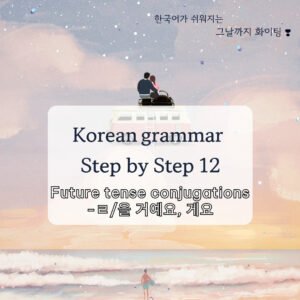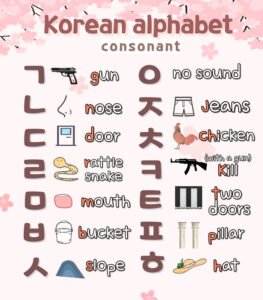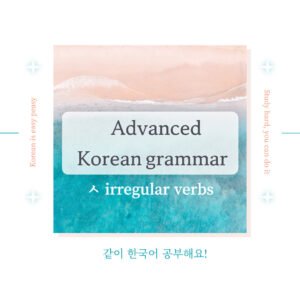ㄴ/은 채로 Grammar: While keeping something as it is
Hello! Today, we’re going to learn about the Korean grammar -ㄴ(은) 채.
채로 grammar is used when you perform one action while keeping another state or action unchanged.
I will explain how to use this expression naturally with various examples. Let’s get started!
Let’s grasp the concept of grammar
🌱How to form🌱
Verb (past tense form) + ㄴ/은 채(로)
Verb that ends in a batchim -> 은 채(로)
Verb that ends in a vowel -> ㄴ 채(로)
The -ㄴ(은) 채 grammar pattern is used to indicate that one action or state remains unchanged while another action occurs. It emphasizes that something happens while maintaining a particular condition.
🚫 It cannot be used with future tense or adjectives.
Incorrect: ❌ 피곤한 채로 잤어요. (“I slept while being tired.”) → Instead, use 피곤한 상태로 잤어요.
✅ 로 can be omitted!
Let’s take a look at examples! 🎵
1) Wearing Something (Keeping Clothes/Accessories On)
신발을 신은 채로 들어가면 안 돼요.
You shouldn’t go inside with your shoes on. (The shoes remain on while entering.)
-> 신다 (to wear + shoes/socks) ends in a batchim, so we add 은 채. The 로 can be omitted.
안경을 쓴 채로 잤어요.
I fell asleep with my glasses on. (The glasses stayed on while sleeping.)
-> 쓰다 (to wear + glasses/hat) ends in a vowel, so we add ㄴ 채. The 로 can be omitted.
오늘은 머리를 안 감아서 모자 쓴 채로 있을 거예요
Today, I didn’t wash my hair, so I’ll keep my hat on.
2) Physical State or Condition While Doing Something
팔짱을 낀 채로 앉아 있었어요. (팔짱을 끼다: to be arms crossed)
I was sitting with my arms crossed.
눈을 감은 채로 음악을 들었어요.
I listened to music with my eyes closed.
머리 못 감은 채로 나왔어요.
I left without washing my hair.
한국에서는 고개를 숙인 채로 인사를 해야해요.
In Korea, you should greet someone while keeping your head down.
3) Others
책을 든 채로 이야기를 했다.
I talked while holding a book. (The book remained in hand while talking.)
휴대폰을 켠 채로 자서 배터리가 다 닳았어.
I fell asleep with my phone on, so the battery ran out.
과자 뜯은 채로 놔 두면 눅눅해져
If you leave the snacks open, they get soggy
* 뜯다 means “to tear open” or “rip open,” and it’s commonly used!
* Soggy translates to 눅눅하다, and the correct verb form would be 눅눅해지다 (to become soggy).
Actually, ‘-고’ can be used instead of ‘-ㄴ(은) 채’.
The ‘-ㄴ(은) 채’ is quite specific, and I typically use it to emphasize that a particular state is being maintained. In most cases, however, ‘-고’ can be used!
Here’s the distinction:
Difference Between -고 and -ㄴ(은) 채
| Sentence | Meaning with -고 | Meaning with -ㄴ(은) 채 |
|---|---|---|
| 신발을 신고 잤어요. | “I put on my shoes and then slept.” | (Implies a sequence of actions) |
| 신발을 신은 채로 잤어요. | “I slept with my shoes on.” | (Emphasizes that the shoes stayed on while sleeping) |
-ㄴ(은) 채 focuses on the unchanged condition during the second action.
Summary🌱
Often interchangeable with -고, but more focused on maintaining a state!
-ㄴ(은) 채 = “while keeping something as it is“
Used for sustained states during another action
Not for natural sequences or adjectives🚫
✨✨Practice time!! ✨✨
(1) I went outside with my hat on.
(2) I watched TV with the blanket on.
(Put a blanket over: 담요(를) 덮다)
(3) I slept with my hair not fully dried.
(dry hair: 머리(를) 말리다)
(4) I went home without finishing all my work yesterday.
(5) I was so tired yesterday that I fell asleep without even washing my face.
(wash one’s face: 세수(를) 하다 / to fall asleep: 잠(이) 들다)
(6) I have so many cosmetics. There are even 10 that I haven’t opened yet.
(There are 10 that remained unopened)
(cosmetics: 화장품 / to tear open & rip open: 뜯다)
(7) Try living for just one day with your phone turned off. You’ll notice a lot of changes.
(to notice / feel: 느끼다)
(8) He got angry at me and left without saying anything. What should I do?
✨Here are the answers !!✨








